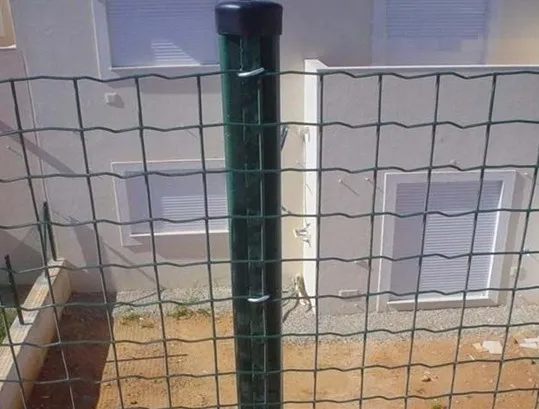Δεκ . 21, 2024 10:29 Back to list
hydraulic hose ferrule
The Role of Hydraulic Hose Ferrules in Fluid Power Systems
Hydraulic hoses are integral components of fluid power systems, connecting various elements and transmitting hydraulic fluid under pressure to facilitate the operation of machinery and equipment. Among the many components that comprise hydraulic hose assemblies, ferrules play a pivotal role in ensuring the integrity, safety, and efficiency of these systems. This article delves into the significance of hydraulic hose ferrules, their types, applications, and best practices for installation and maintenance.
Understanding Hydraulic Hose Ferrules
A hydraulic hose ferrule is a metal or plastic fitting that secures the end of a hydraulic hose to a coupling or connector. It is typically crimped onto the hose using a hydraulic crimper, creating a tight seal that prevents the escape of hydraulic fluid under high pressure. Ferrules are essential for maintaining the structural integrity of the hose, minimizing the risk of leaks and failures during operation.
Types of Hydraulic Hose Ferrules
Hydraulic hose ferrules come in various shapes, sizes, and materials, designed to fit specific hose types and applications. Some of the most common types include
1. Crimp Ferrules These are the most widely used ferrules and are designed to be crimped onto the hose using a special crimping tool. They provide a strong, reliable connection that can handle high pressure and temperature ranges.
2. Screw-on Ferrules These ferrules are threaded and screw directly onto the hose, providing a simple and effective connection. They are often used in low-pressure applications.
3. Reusable Ferrules As the name suggests, these ferrules can be disassembled and reused, making them a cost-effective option for certain applications. However, they require careful inspection and maintenance to ensure proper functionality.
4. Specialized Ferrules Some ferrules are designed for specific applications, such as those that operate in extreme environments or under unique pressure conditions. These specialized ferrules may feature additional coatings or design elements to enhance performance.
Applications of Hydraulic Hose Ferrules
Hydraulic hose ferrules are used across various industries and applications, including
- Construction Heavy machinery such as excavators, bulldozers, and cranes rely on hydraulic systems for their operation. Ferrules ensure that hydraulic hoses remain securely connected to these machines, facilitating smooth operation.
hydraulic hose ferrule

- Agriculture Equipment like tractors and harvesters employ hydraulic hoses for power transmission. Ferrules play a crucial role in maintaining the efficiency of these hydraulic systems and preventing downtime caused by leaks.
- Manufacturing In factories, hydraulic systems control machinery like presses, lifts, and conveyor belts. Ferrules ensure that hydraulic hoses can withstand the pressures generated during operations.
- Automotive Hydraulic hoses in vehicles, particularly in braking and steering systems, depend on reliable ferrules to maintain performance and safety.
Best Practices for Installation and Maintenance
To ensure the reliability of hydraulic hose assemblies, proper installation and maintenance of ferrules are paramount. Here are some best practices
1. Select the Right Ferrule Always choose ferrules that are compatible with the hose type and size to ensure a secure fit.
2. Use Proper Crimping Techniques When crimping ferrules onto hoses, adhere to manufacturer specifications for crimping pressure and technique. This ensures a proper seal and prevents premature failure.
3. Regular Inspection Periodically inspect hydraulic hoses and ferrules for signs of wear, damage, or corrosion. Early detection of issues can prevent catastrophic failures.
4. Maintain Cleanliness Contaminants can compromise the integrity of hydraulic systems. Keep working areas clean and ensure that hoses and ferrules are free from dirt and debris during installation.
5. Retain Documentation Maintain records of the types of ferrules and hoses used in each assembly. This can aid in troubleshooting and replace those components efficiently if problems arise.
Conclusion
Hydraulic hose ferrules are more than just fittings; they are critical components that ensure the safety and efficiency of hydraulic systems across numerous industries. By understanding their importance, selecting the right types, and following best practices for installation and maintenance, operators can significantly enhance the reliability and longevity of their hydraulic equipment, ultimately leading to increased productivity and reduced downtime in operations. As technology continues to advance, so too will innovations in ferrule design and materials, promising even greater performance and safety in fluid power systems.
-
The Power of Iron Wire: A Versatile Solution for Multiple Applications
NewsJun.19,2025
-
Reliable Hydraulic Fittings for Optimal Performance
NewsJun.19,2025
-
Quality Roofing Nails for Every Project
NewsJun.19,2025
-
Hexagonal Wire Mesh: Versatile and Durable Solutions for Every Project
NewsJun.19,2025
-
Enhancing Security with Barbed Wire Solutions
NewsJun.19,2025
-
Binding Wire: The Essential Material for a Variety of Applications
NewsJun.19,2025









